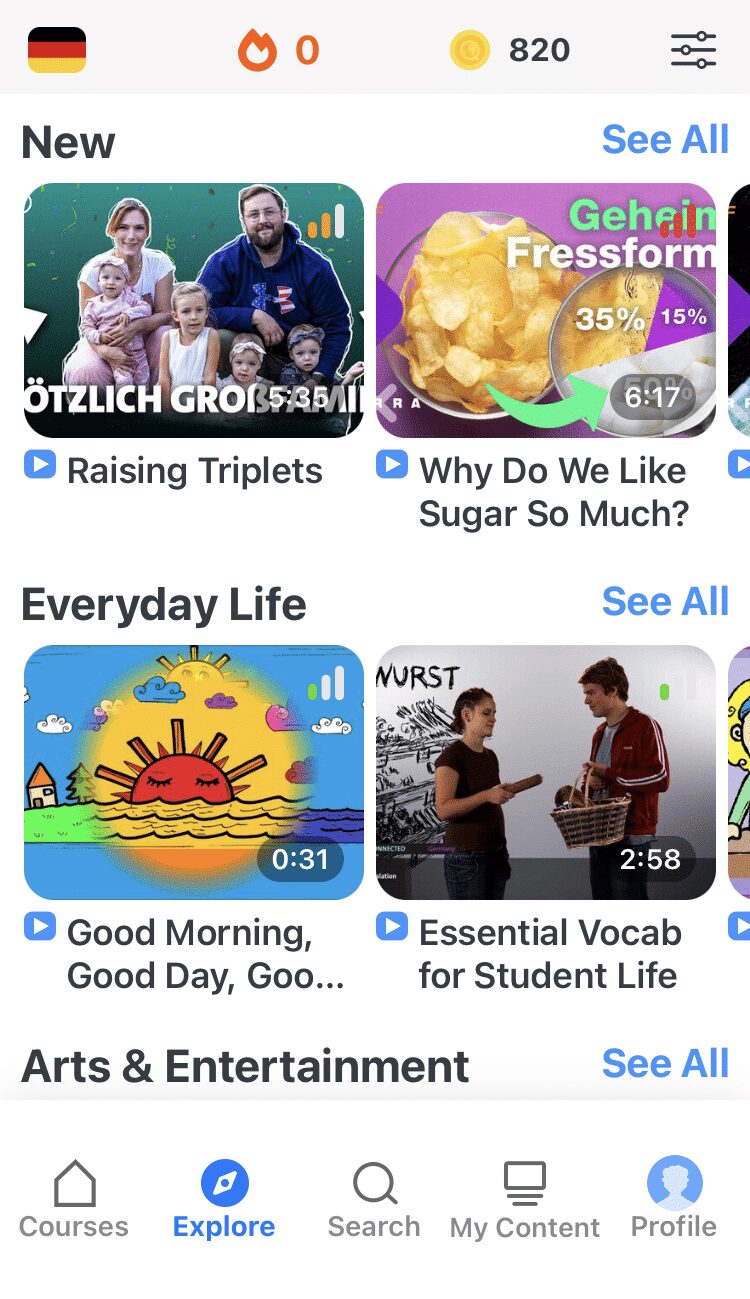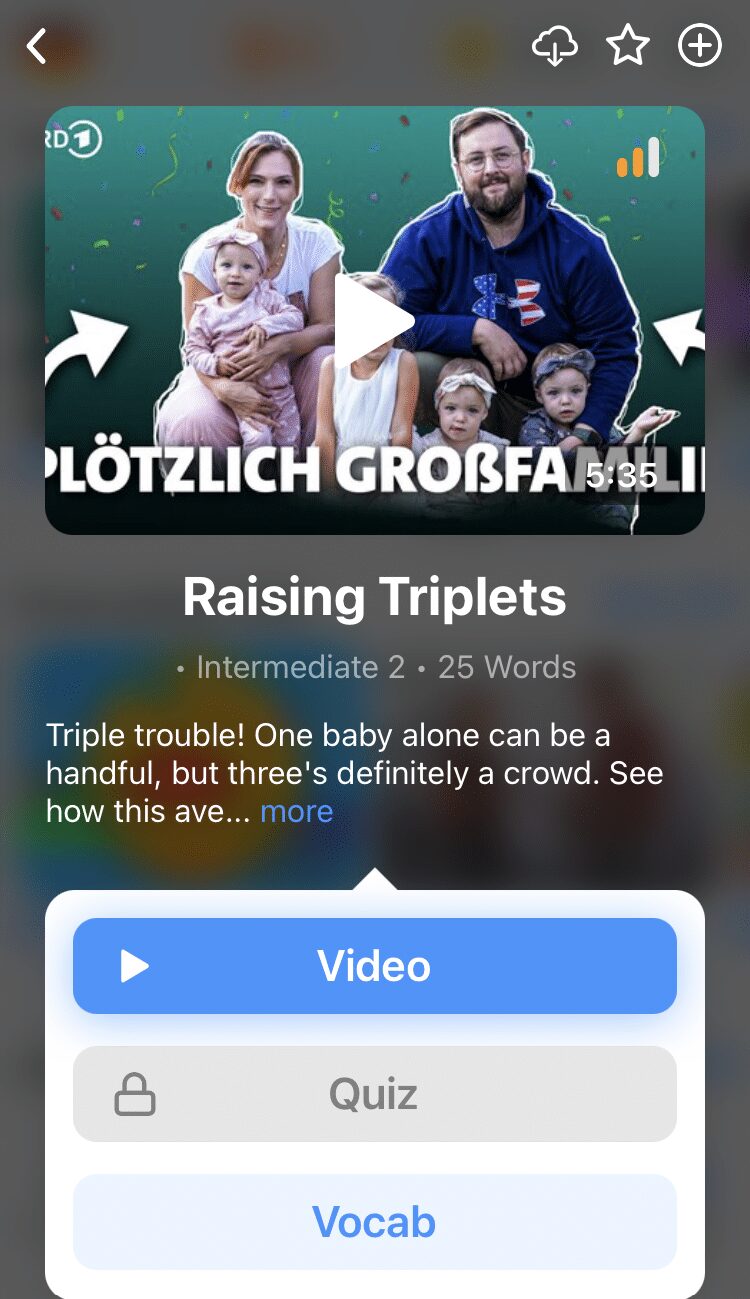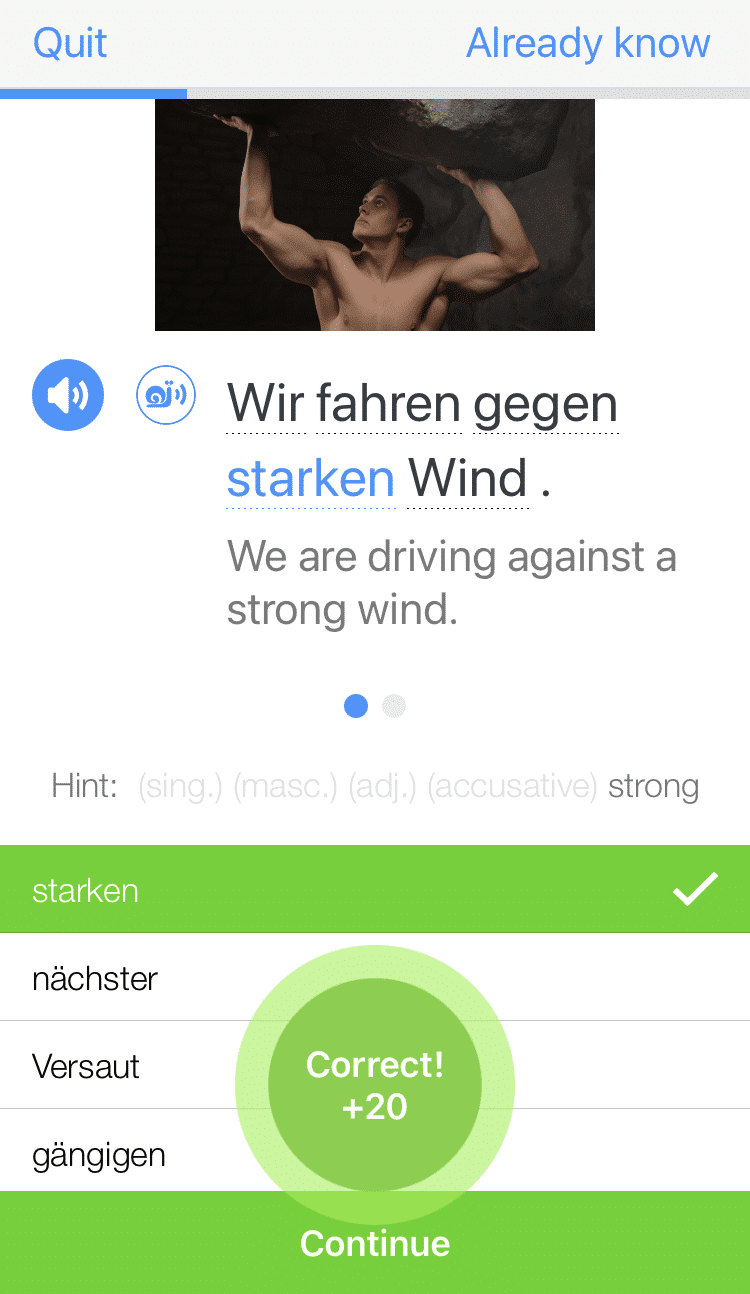Dative Pronouns in German

Dative pronouns are everywhere in German—you need them to talk about a lot of everyday topics, like asking for help or explaining what you like.
German grammar may be no picnic, but this easy-to-follow guide can make dative pronouns feel like a walk in the park. Find out about the different dative pronouns and how exactly to use them, with tons of example sentences and audio to guide you.
Download: This blog post is available as a convenient and portable PDF that you can take anywhere. Click here to get a copy. (Download)
What Is the Dative Case in German?
German has four cases for both nouns and pronouns:
| German Case | Function |
|---|---|
| Nominative | Subject (the doer of the verb) |
| Accusative | Direct object (the noun acted upon by the verb) |
| Genitive | Possession |
| Dative | Indirect object (the receiver of the verb) |
Each case reflects the function of a noun in a sentence, and a noun changes form based on its case.
The dative case is used for the indirect object in a sentence. For example:
Ich habe meiner Mutter den Computer gegeben.
I gave the computer to my mom.
The noun in the dative case here would be meiner Mutter (to my mother) since it’s the indirect object “receiving” the direct object.
The dative case can also be triggered by certain prepositions or certain verbs.
But you may be asking how the dative actually changes things.
For nouns, we change the article before it if it’s in the dative case.
For example, der Hund (the dog) becomes dem Hund in the dative case.
German pronouns also have to be changed to their dative equivalent. In the earlier sentence, if we want to replace meiner Mutter with a German pronoun, we have to use the dative equivalent of “she”:
Ich habe ihr den Computer gegeben.
I gave the computer to her.
What Are Dative Pronouns in German?
There are two types of pronouns that are used in the dative case in German:
- Personal pronouns
- Inanimate object pronouns
Personal Pronouns in the Dative Case
The first type is personal pronouns. These are the ones that replace people such as der Vater (the father) or Maria. They can also replace groups of people such as der Vater und Maria (the father and Maria).
Since you’re probably already familiar with the German nominative pronouns, we’ll use those as a reference point to show how pronouns change when you move to the dative case:
| Number | Person | Nominative | Dative | Meaning |
|---|---|---|---|---|
| Singular | First | ich | mir | To me |
| Second | du | dir | To you (singular) | |
| Third | er | ihm | To him | |
| sie | ihr | To her | ||
| Plural | First | wir | uns | To us |
| Second | ihr | euch | To you (plural) | |
| Third | sie | ihnen | To them |
Let’s look at some examples of each dative pronoun:
Kannst du mir helfen?
(first person, singular)
Can you help me?
Was hat er dir gegeben?
(second person, singular)
What did he give you?
Das Auto gehört ihm, aber das Haus gehört ihr.
(third person, singular)
The car belongs to him, but the house belongs to her.
Das passiert uns öfters.
(first person, plural)
That happens to us often.
Ich werde euch folgen.
(second person, plural)
I will follow you all.
Wir danken Ihnen für Ihr Verständnis.
(third person, plural)
We thank you for your understanding.
However, if you see Ihnen with a capital I, it actually means “to you” in the formal sense (second person, either singular or plural). This comes from Sie with a capital S, which is the formal pronoun for “you”:
Er hilft Ihnen.
(second person, formal)
He helps you.
Ihnen is also used in this way in the common sentence Wie geht es Ihnen? (How are you?)
Inanimate Object Pronouns in the Dative Case
In English, we refer to humans as either “he,” “she,” or “they,” and then all non-human entities are just “it.” However, in German, all things have a grammatical gender that you need to use when referring to it.
So, you wouldn’t use the pronoun es (it) when referring to a table, because a table is der Tisch (the table), so you’d need to use the masculine pronoun er (he/it).
Wie groß ist der Tisch? / Er ist sehr klein.
How big is the table? / It is very small.
And these object pronouns then need to be declined depending on the case the pronoun is in.
The third person pronouns in the nominative case are: es , er , sie and plural sie .
Here are their dative equivalents:
| Number | Nominative | Dative | Meaning |
|---|---|---|---|
| Singular | er (masculine) | ihm | to him / it |
| es (neuter) | ihm | to it | |
| sie (feminine) | ihr | to her / it | |
| Plural | sie | ihnen | to them |
Check out the following example sentences:
Ich gebe der Katze ein Spielzeug.
— I give the cat a toy.
Ich gebe ihr ein Spielzeug.
— I give it (the cat) a toy.
Du folgst dem Pfad.
— You follow the path.
Du folgst ihm.
— You follow it (the path).
Ich glaube dem Buch.
— I believe the book.
Ich glaube ihm.
— I believe it.
Wir helfen den Vögeln.
— We help the birds.
Wir helfen ihnen.
— We help them.
Watch out for nouns that refer to humans but have a different grammatical gender than expected. Das Mädchen (the girl) is a typical example of a neuter noun, despite it referring to a female person. We therefore need to use the pronoun es (it) when referring back to das Mädchen, and not sie (she/her).
For example:
Ich danke dem Mädchen.
I thank the girl.
Ich danke ihm.
I thank her.
How to Form Sentences with Dative Nouns and Pronouns in German
Now that you’ve got the low-down on indirect objects, you might be wondering what order they go in if there’s already a direct object in the sentence.
Generally, in a sentence with two nouns, the dative noun goes before the accusative one:
Ich gebe der Frau das Geld. (I give the money to the woman.)
However, when one of these objects becomes a pronoun, the pronoun needs to come first.
Ich gebe es der Frau.
I give it to the woman.
Ich gebe ihr das Geld.
I give the money to her.
And lastly, if there are two pronouns in the sentence, the accusative pronoun takes the lead and the dative pronoun goes second:
Ich gebe es ihr.
I give it to her.
You can see how dative pronouns work in different sentence structures by listening to native speakers use them on FluentU.
FluentU takes authentic videos—like music videos, movie trailers, news and inspiring talks—and turns them into personalized language learning lessons.
You can try FluentU for free for 2 weeks. Check out the website or download the iOS app or Android app.
P.S. Click here to take advantage of our current sale! (Expires at the end of this month.)
When to Use Dative Pronouns in German
Dative pronouns are usually for indirect objects, but you’ll also have to use them in these special situations.
Verbs that Trigger the Dative Case
There is a group of verbs in German that’ll always have objects that are in the dative case. This applies even if the object that follows would typically be considered a direct object in English.
Here’s a list of common verbs that are followed by the dative case:
- helfen (to help)
- glauben (to believe)
- danken (to thank)
- antworten (to answer)
- folgen (to follow)
- verzeihen (to forgive)
- zustimmen (to agree with)
For example, the objects in these sentences need to be in the dative case, either by changing the article or by using a dative pronoun:
Ich helfe ihr.
I’m helping her.
Der Hund folgt mir.
The dog is following me.
Ich kann dir nicht verzeihen.
I cannot forgive you.
The following verbs also require dative pronouns:
| German | English | Example |
|---|---|---|
| Gefallen | To like | Das Hemd gefällt mir.
(I like the shirt.) |
| Schmecken | To taste | Der Schnitzel schmeckt ihnen gut.
(The schnitzel tastes good to them.) |
| Wehtun | To hurt | Tut dir der Kopf weh?
(Does your head hurt?) |
| Fehlen | To lack | Ihr fehlen die Wörter.
(She lacks the words.) |
| Gehören | To belong | Das Buch gehört euch.
(The book belongs to you all.) |
| Passieren | To happen | Das ist uns passiert.
(That happened to us.) |
Sentence Constructions that Require Dative Pronouns
There are also a number of sentence constructions where you have to use dative pronouns.
Firstly, to talk about the temperature in relation to a person, one must use the dative case. For example:
Mir ist kalt.
I am cold.
Ihnen ist heiß.
They are hot.
You can’t say ich bin kalt or sie sind heiß, which are common literal translations from English. This is because in German you need to literally say that it is hot or cold, and then reflect it onto the person: “To me, it is hot.”
How to Practice Dative Pronouns in German
Learning without practice? Don’t let that be the case!
As you review your German dative pronouns, you’ll find that there are many resources online to help you practice. Here are a few great ones to start you off:
- Start with a quiz from ToLearnFree. It asks learners to write in the appropriate dative personal pronoun in the blank.
- Next, challenge yourself to a quiz from Lingolia. The quiz starts with a short explanation of personal pronouns in the dative so you can review before the quiz. The quiz itself is a mixture of fill-in-the-blank and multiple-choice exercises.
- German.net offers a helpful quiz on dative pronouns, which you can use to check your progress.
- Lastly, the University of Texas offers an easy-to-read explanation, short story and exercises exclusively to practice dative personal pronouns.
Now get to case work! You have the knowledge to master German dative pronouns and skyrocket your level of German.
Download: This blog post is available as a convenient and portable PDF that you can take anywhere. Click here to get a copy. (Download)
And One More Thing...
Want to know the key to learning German effectively?
It's using the right content and tools, like FluentU has to offer! Browse hundreds of videos, take endless quizzes and master the German language faster than you've ever imagine!
Watching a fun video, but having trouble understanding it? FluentU brings native videos within reach with interactive subtitles.
You can tap on any word to look it up instantly. Every definition has examples that have been written to help you understand how the word is used. If you see an interesting word you don't know, you can add it to a vocabulary list.
And FluentU isn't just for watching videos. It's a complete platform for learning. It's designed to effectively teach you all the vocabulary from any video. Swipe left or right to see more examples of the word you're on.
The best part is that FluentU keeps track of the vocabulary that you're learning, and gives you extra practice with difficult words. It'll even remind you when it’s time to review what you’ve learned.
Start using the FluentU website on your computer or tablet or, better yet, download the FluentU app from the iTunes or Google Play store. Click here to take advantage of our current sale! (Expires at the end of this month.)












